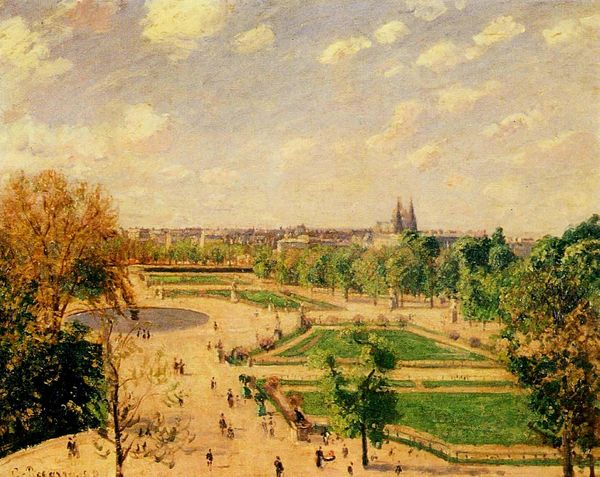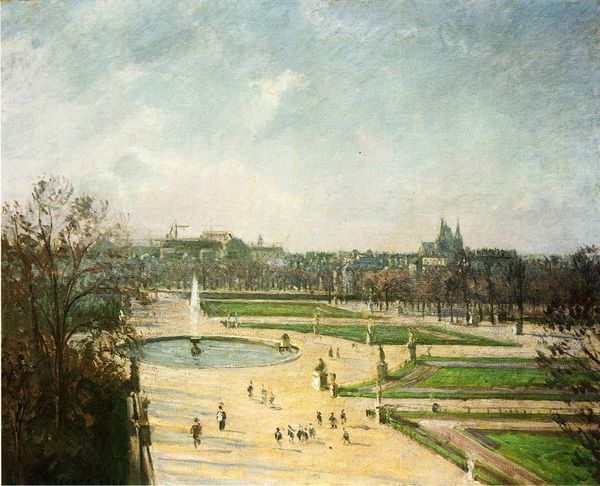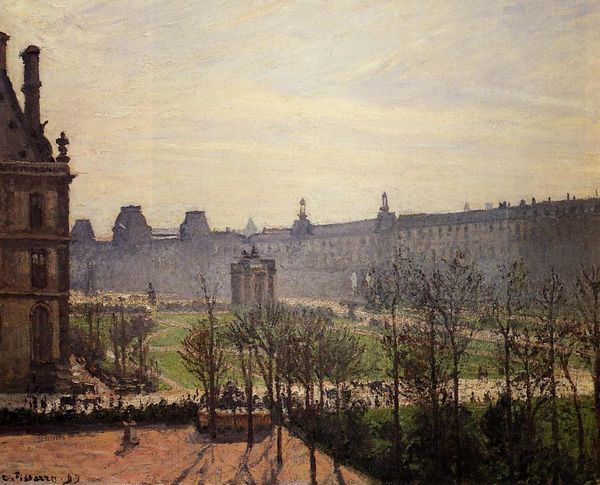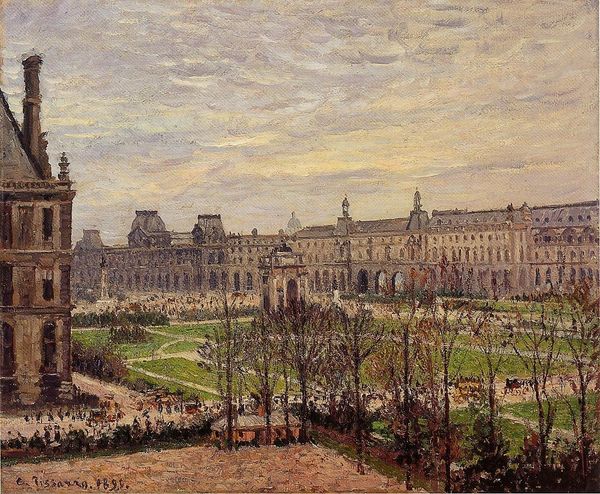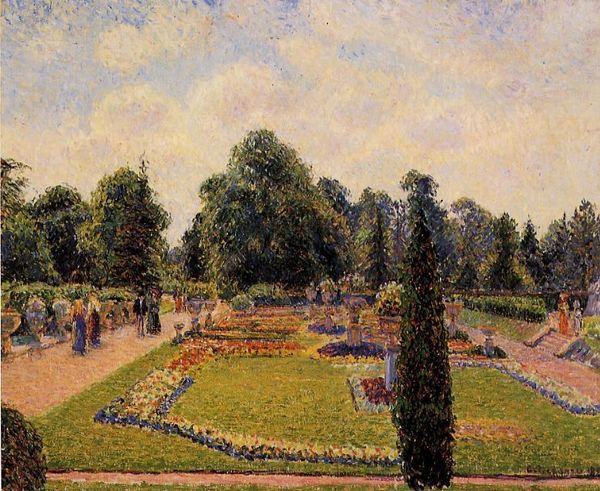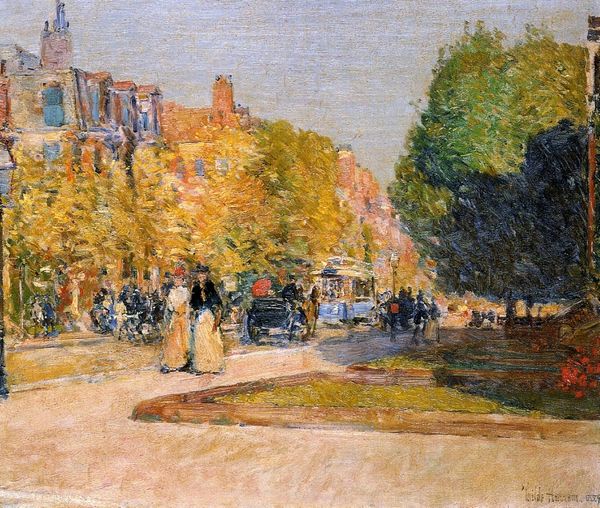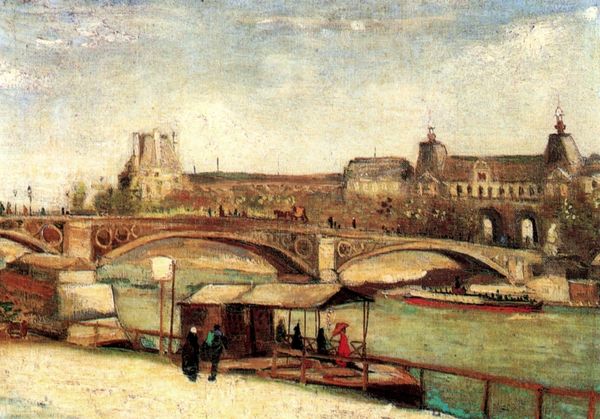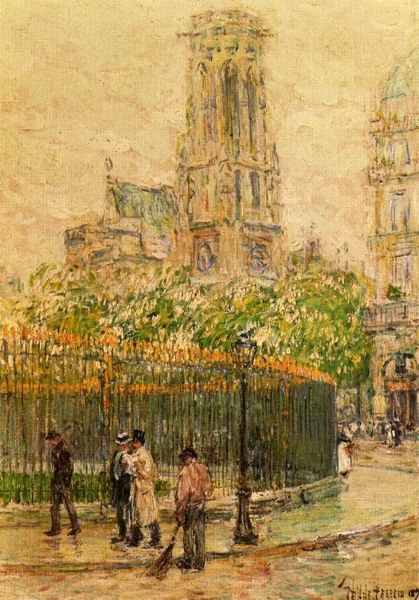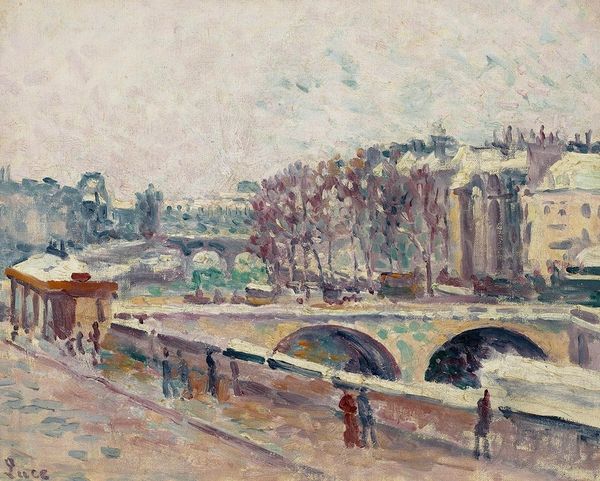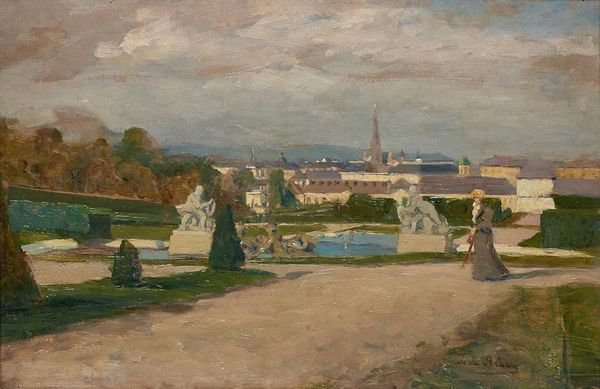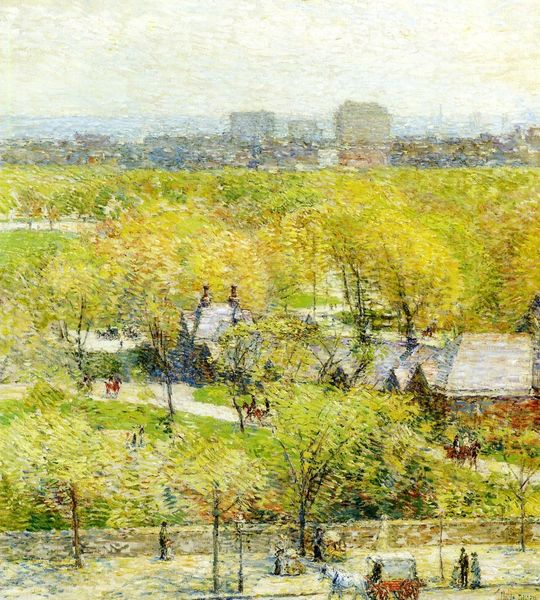
Copyright: Public domain
Camille Pissarro created this oil painting, 'The Tuileries and the Louvre', using techniques rooted in Impressionism. The painting is built up of many layers of brushstrokes, laid down in loose, free gestures. The painting’s material qualities are most evident in its textured surface, which creates a sense of depth and movement within the composition. Look closely, and you will see how Pissarro manipulated the paint to create subtle variations in color and light. Pissarro, along with other Impressionists, challenged the academic tradition of painting, which favored smooth, polished surfaces and carefully controlled compositions. Instead, he embraced a more spontaneous, direct approach, allowing the materials and processes of painting to become visible in the finished work. This shift reflects broader social and cultural changes in the late 19th century, as artists sought to capture the fleeting moments of modern life, and explore new forms of expression. The value of labor is seen in the many small brushstrokes that make up this expansive view. By emphasizing the importance of materials, making, and context, we can gain a deeper understanding of this artwork and its place in the history of art.
Comments
No comments
Be the first to comment and join the conversation on the ultimate creative platform.
